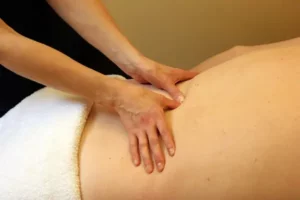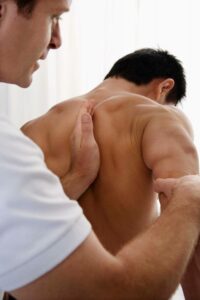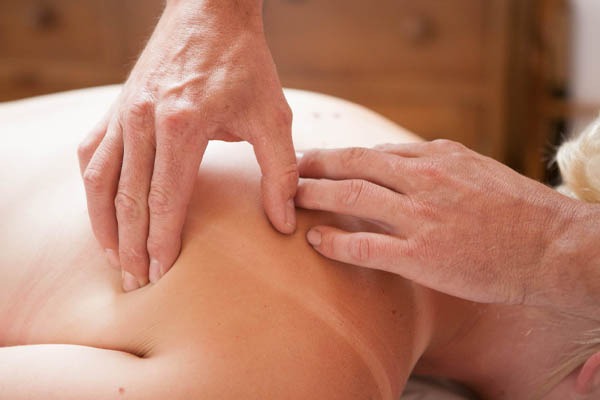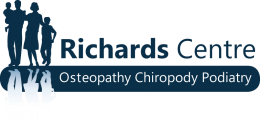Can osteopathy help manage back pain?
The human spine is a complex anatomical structure, that forms the main framework of the trunk. The spine (backbone) consists of 26 bones (vertebrae), which are dorsally placed and attached to the base of the skull. The bony structures are reinforced by strong muscles and ligaments. All this together forms support to the body and enhances movement. Any damage to the spine (although, it is difficult to cause), can eventually cause pain and discomfort to the muscles and ligaments.
Back pain is a common condition nowadays, where people seek medical aid. It is an uncomfortable feeling and should debilitate as it is a common reason for absence from work today.
If you experience back pain you should always seek professional medical advice. Back pain sufferers must follow their practitioner’s advice so to improve their posture, stretching, lifting, and other body mechanics.
Most people pay for osteopathy treatment privately but private health insurance providers also sometimes provide cover for osteopathic treatment.
Back Pain Types
- Acute pain – sudden onset and lasts for 6 weeks.
- Chronic pain – develops over a longer period, for more than 3 months, and has a long-term effect causing problems in the future.
Back Pain Causes

Cause for back pain can be categorised as follows:
Posture and movement
The most common reason for back pain in the present generation.
People working in computers who adopt improper sitting postures (hunched sitting position) may develop back pain in the coming future.
Poor postures during coughing and sneezing, over bending awkwardly, overstretching, twisting, lifting heavy objects, sitting or standing for a prolonged period, long drives, sleeping on mattresses that do not form support for the back may cause back pain.
Structural problems

The disk forms a cushion to each vertebra of the spine.
Bulging disk –A bulge in the disk can bring more pressure to the nerves, which causes severe pain.
Ruptured disk -causes pressure to nerves as bulging nerves.
Arthritis – Osteoarthritis causes problems in the lower back, joints of the hip, etc which may cause back pain. It can also cause a narrowing of space around the spinal cord, leading to spinal stenosis.
Osteoporosis -brittleness, and porosity of bones may increase, making the bones more susceptible to fracture.
Abnormal curvature of the spine – eg, scoliosis (sideways curvature of the spine).
Sciatica -pain radiating through hips and buttocks, down the back of the leg. Pain may be sharp, shooting type, caused by spinal disc herniation.
Renal problems – kidney infection or kidney stones may cause back pain.
Strain
Muscle and ligament strain -lifting heavy objects improperly causes strain of muscles and ligaments.
An injury, fracture, muscle tension, and muscle spasm can also trigger back pain.
Other causes
Certain medical conditions can cause back pain, such as:
- Infection of the spine: causes warm, tender area on the back.
- Cancer of spine: tumour of the spine may cause pressing against a nerve, causing back pain.
- Cauda equina syndrome: causes a dull pain of the lower back region, upper buttocks, and numbness especially over buttocks, thighs, and genitalia. Sometimes bladder and bowel dysfunction may also occur.
- Shingles (Herpes Zoster): can cause back pain.
- Individuals having sleep disorders will develop back pain.
- Renal infections or Pelvic Inflammatory Disease can also lead to back pain.
BACK PAIN RISK FACTORS
- Genetic factors
- Age -more likely to occur in older, usually around 30 or 40.
- Obesity -excess body weight causes more strain on the body and more stress on the back, leading to back pain.
- Sedentary lifestyle
- Medical conditions – like cancer and arthritis.
- Smoking -Smoking increases the risk of osteoporosis as the habit decreases the oxygen flow to sine. Also, smokers prompt coughing, which is a major cause of back pain because it leads to herniated disks.
- Pregnancy
- Occupational factors -contribute to back pain to a larger extend.
- Psychological conditions -People having anxiety, mood disorders, and depression are high-risk groups to develop back pain.
- Lack of physical exercises or physical fitness -may lead to weakness of muscles being unused, which gradually leads to back pain.
- strenuous physical exercise or work, especially if done incorrectly. Straineous or improper lifting of objects.
It is noted that women tend to develop back pain more likely than males. A lot of hormonal factors contribute to this.

The main symptom of back pain is an ache in the back, which may be stabbing, shooting pain, and may have a burning sensation. The pain may sometimes radiate to the buttocks and legs and may also get worsened with continuous standing and walking for long, lifting heavy objects, and bending.
Depending on the nerves that got affected, the pain may arise in other parts of the body too.
Other symptoms include:
- Back pain, that persists during resting and lying down.
- Inflammation on back.
- Pain over legs
- Pain over knees.
- Weight loss
- Weakness
- Fever
- Numbness of buttocks, thighs, and genitalia.
- Faecal incontinence
- Urinary incontinence
- Injury, or trauma

Osteopathy And Back Pain
Different techniques are employed by osteopaths to treat back pain holistically and relieve pain. As a speciality of osteopathic medicine, it treats the whole body (rather than specific symptoms or illnesses) and emphasizes the importance of the musculoskeletal system to health and wellbeing.
This study focuses on the relationship between structure and function in the human body. Osteopathic medicine provides a non-invasive, drug-free treatment that strengthens musculoskeletal structures
Osteopathy is a holistic practice used to detect, treat and prevent different health conditions using massage, stretching, and joint mobilization and movement, as the proper alignment of the musculoskeletal system is necessary for the body to heal by itself. It is a non-invasive, drug-free manual treatment procedure that mainly focuses on the musculoskeletal system. Osteopathy is based on the principle that there is an interconnection between all the body parts, hence it is said that the proper functioning of an organ will eventually reflect on the health of the entire system.
Osteopathy is an effective treatment procedure for treating back pain. Complete case history of the patient is taken along with thorough examinations (inspection and palpation), and analysis with diagnostic tools like X-ray, scans, and other tests.
In Osteopathic Medicine, non-invasive manual treatment focuses on strengthening the musculoskeletal frameworks to Increase or restore joint mobility; Relieve muscle tension; Reduce pain and stiffness in muscles and joints; Improve blood flow; Enhance tissue elasticity.
The National Institute for Health and Care Excellence (NICE) recommends manual therapy alongside exercise as a treatment option for lower back pain, with or without sciatica.
There is no need to be referred by a physician to see an osteopath privately. Osteopathic treatments are covered by most private health insurance providers.
Introducing Osteopathy: What it does, How it works, Safety and regulation Evidence Osteopathy is a way to discover, treat, and prevent health problems by moving, stretching, and massaging muscles and joints.
What do we treat
- Generalized aches and pains
- Arthritic pain
- Joint pain
- Back pain caused by improper posture
- Pregnancy back pain
- Sciatica
- Lumbago
- Inability to relax
- Osteoarthritis
- Back pain arising as a result of injury or trauma
- Back pain caused by a herniated disc
- Muscle spasm
- Muscle tension
- Mechanical back pain -back pain caused by improper movements and poor posture.
- Fibromyalgia and Neuralgia
- Sports injuries
In addition to providing treatment for the alleviation of pain, an osteopath will advise you on the ways to improve your posture, stretching, and lifting, and different body mechanics along with various means of rehabilitation too. Osteopaths will help you to maintain a healthy and strong back by educating you about:
- Exercise -that does not cause strain to the back, provides strength and support to the back. Swimming and walking are good choices.
- Maintain health by reducing overweight that causes strain to back.
- Abdominal and back muscle exercises to increase muscle flexibility and strength.
- Adjust posture and movement
- Quit smoking
What we offer
Osteopathy is generally considered an effective and safe remedy. Proper diagnosis will always make the treatment more precise. Patients should always follow the practitioner’s advice for the best results, i.e., osteopath and patient should work together. Certified osteopaths at Richard’s Osteopathy will serve you the best. Efficiency, quality of service, and the attention, our osteopaths provide to our clients are worthy.

